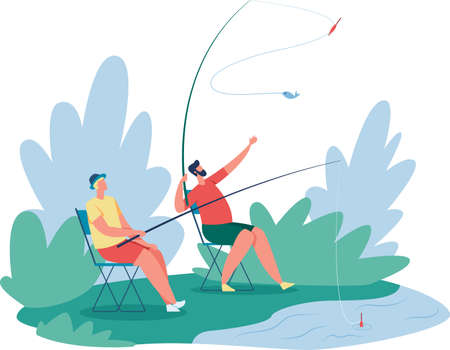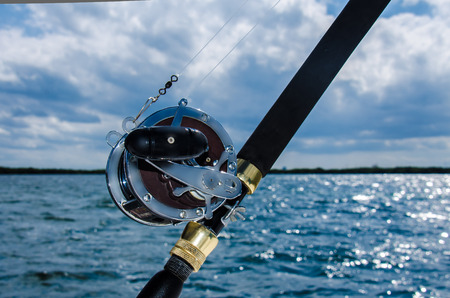Understanding Heavy Cover and Its Challenges
When it comes to flipping, pitching, and punching in bass fishing tournaments, understanding heavy cover is the first step to success. In American waters, “heavy cover” refers to thick vegetation or structure that provides ideal hiding spots for big bass. This kind of environment not only shelters bass from predators but also creates ambush points where they can strike at passing prey.
What Qualifies as Heavy Cover?
Not all cover is created equal. In tournament scenarios, anglers often target the thickest, gnarliest stuff they can find—because thats where the lunkers live. Heres a breakdown of common types of heavy cover found across the U.S.:
| Type of Cover | Description | Regions Commonly Found |
|---|---|---|
| Hydrilla | A dense, underwater grass that grows in thick mats near the surface. | Southeast (Florida, Texas), some Midwestern lakes |
| Matted Hyacinths | Floating vegetation that forms tight mats on the water’s surface. | Southern states, especially Florida and Louisiana |
| Flooded Timber | Submerged or partially submerged trees and stumps. | Midwest reservoirs, parts of Texas and Oklahoma |
| Lily Pads | Large floating leaves with strong stalks—great ambush zones for bass. | Northeast, Midwest, Southern backwaters |
Why Big Bass Love Heavy Cover
Heavy cover offers everything a big bass needs: food, shade, oxygen-rich water, and protection from both predators and pressure. These areas are often overlooked by less-experienced anglers because they can be tough to fish effectively. But if you know how to flip, pitch, or punch your bait right into these zones, you’ll get access to fish that most others miss.
Main Challenges When Fishing Heavy Cover
- Bait Penetration: Getting your lure through thick vegetation without getting hung up can be tricky.
- Hooksets: You need strong gear and sharp hooks to drive through both the weed barrier and the fish’s mouth.
- Fish Extraction: Once hooked, pulling a bass out of the thick stuff requires power and precision.
Pro Tip:
If you’re not getting snagged every now and then, you might not be fishing heavy enough cover. Don’t be afraid to get dirty—big bass love it when others stay away from their jungle homes!
This foundational knowledge sets the stage for mastering techniques like flipping, pitching, and punching—each designed to tackle different kinds of heavy cover situations effectively.
2. Gear Selection for Maximum Efficiency
When it comes to flipping, pitching, and punching in heavy cover, having the right gear makes all the difference. These techniques demand power, precision, and durability—so your rod, reel, line, and lure setup needs to be dialed in. Let’s break down exactly what you need to maximize your efficiency on the water.
Rod Selection
You’ll want a heavy-power, fast-action rod between 7’3” and 7’11” long. The extra length helps with line control and leverage when pulling big bass out of thick vegetation or under docks. Look for rods specifically labeled for flipping or punching—they’re built to handle the abuse.
Recommended Rod Specs
| Technique | Rod Length | Power | Action |
|---|---|---|---|
| Flipping | 76″ – 711″ | Heavy | Fast |
| Pitching | 73″ – 76″ | Medium-Heavy to Heavy | Fast |
| Punching | 76″ – 711″ | Extra Heavy | Fast |
Reel Choice & Gear Ratio
A high-speed baitcasting reel is ideal for these techniques. You want something in the 7.1:1 to 8.5:1 range. The faster retrieve helps you quickly get fish out of heavy cover and back into the boat before they wrap around structure.
Suggested Reel Gear Ratios by Technique
| Technique | Gear Ratio Range |
|---|---|
| Flipping | 7.1:1 – 8.1:1 |
| Pitching | 7.1:1 – 8.5:1 |
| Punching | 8.1:1 – 8.5:1 |
Main Line Choices: Braid is King
Braided line is the go-to for all three techniques because of its strength and zero stretch, which gives you better hooksets and control in dense vegetation.
Braided Line Recommendations
| Technique | Braid Strength (lb test) |
|---|---|
| Flipping | 50 – 65 lb braid |
| Pitching (light cover) | 40 – 50 lb braid or fluorocarbon if water clarity is an issue |
| Punching (heavy mats) | 65 – 80 lb braid |
Lure & Weight Setup Tips
Your soft plastics should be compact but bulky enough to draw attention in thick cover. Creature baits, beaver-style baits, and craws are popular choices. Pair them with strong flipping hooks (like straight-shank models) and tungsten weights that punch through vegetation easily.
Tungsten Weight Considerations by Cover Type
| Cover Type | Tungsten Weight Size (oz) |
|---|---|
| Sparse grass or light wood cover | 3/8 – 1/2 oz |
| Dense grass or mats (punching) | 3/4 – 2 oz+ |
| Docks or moderate vegetation (flipping/pitching) | 1/2 – 3/4 oz |
Selecting the right gear ensures every pitch, flip, or punch counts when working heavy cover. With this setup, youre not just fishing—youre targeting tournament-winning bass with confidence.

3. Mastering the Techniques: Flipping, Pitching, & Punching
When fishing in heavy cover during high-stakes tournaments, knowing when and how to flip, pitch, or punch can be the difference between a winning limit and going home empty-handed. Each of these techniques has its place, and mastering them means understanding their unique purpose, executing them with precision, and staying stealthy under pressure.
Flipping
When to Use
Use flipping when youre targeting thick cover within 10-15 feet of your boat. Its ideal for pinpoint accuracy in tight spots like laydowns, docks, or bushes.
Step-by-Step Guide
- Let out about a rods length of line past your reel.
- Hold the line in one hand while swinging the bait with your rod tip.
- Release the line as your bait reaches the target area.
- Let it fall vertically into the strike zone without spooking fish.
Stealth Tips
- Keep movements smooth and slow to avoid water disturbance.
- Use quiet gear: no clanking metal or noisy reels.
- Wear neutral clothing to blend into surroundings.
Pitching
When to Use
Pitching is best when you need slightly more distance than flipping but still want pinpoint control. It’s great for sparse vegetation or scattered targets like stumps or isolated grass patches.
Step-by-Step Guide
- Open your reel and let out 5–10 feet of line.
- Hold your bait in one hand and swing your rod tip upward.
- Release the bait in an underhand motion toward the target.
- Allow it to enter the water quietly and watch for strikes on the fall.
Stealth Tips
- Avoid slapping the water with your bait—soft entries are key.
- Tune your drag to avoid sudden jerks that scare fish.
- Kneel on deck if needed to reduce visibility to wary bass.
Punching
When to Use
Punching is a go-to technique for matted vegetation like hydrilla, lily pads, or hyacinth. If other lures cant break through the surface, its time to punch through and reach hidden fish below.
Step-by-Step Guide
- Rig a heavy tungsten weight (1 oz or more) above a compact soft plastic bait on a straight-shank hook.
- Use braided line (50–65 lb test) for strength and sensitivity.
- Flip or pitch the bait directly onto the mat so it punches through cleanly.
- Watch for subtle bites as it sinks—bass often hit on the drop.
Stealth Tips
- Aim for natural openings in mats to minimize splash noise.
- Tighten your slack quickly but smoothly after entry to detect bites fast without spooking nearby fish.
- Practice controlled hooksets—too aggressive can blow out a good spot fast.
Technique Comparison Chart
| Technique | Best Used For | Typical Distance | Cover Type |
|---|---|---|---|
| Flipping | Close-range targets under heavy cover | 0–15 ft | Bushes, docks, laydowns |
| Pitching | Mid-range precise casting | 10–30 ft | Sparse grass, isolated targets |
| Punching | Breaking through dense mats | Varies based on mat location | Hydrilla, lily pads, hyacinth mats |
The ability to switch between these three techniques based on conditions gives you an edge in any heavy cover tournament situation. With practice and attention to detail, you’ll be able to deliver baits exactly where they need to be—quietly and effectively—even under tournament pressure.
4. Reading Water and Locating Active Bass
When youre flipping, pitching, or punching heavy cover, one of the most important skills you can develop is learning how to read the water and find where bass are actively feeding. Not all cover is created equal, and knowing how to spot productive areas can be the difference between a limit and a long day on the water.
Identifying Productive Heavy Cover
Heavy cover comes in many forms—matted vegetation, laydowns, flooded bushes, docks, and even man-made structures like bridge pilings. The key is figuring out which ones are holding fish. Here’s what to look for:
| Type of Cover | Why Its Productive |
|---|---|
| Matted Vegetation | Provides shade and oxygen; ideal during hot months |
| Laydowns (Fallen Trees) | Creates ambush points and cover from current |
| Docks with Brush Piles | Shelter from sun and human activity; often holds resident fish |
| Flooded Timber or Bushes | Great during high water; bass move shallow into newly available cover |
Understanding Seasonal Movements of Bass
Bass dont stay in one place year-round. Their location and behavior change with the seasons, so your strategy has to adapt too. Heres a quick breakdown:
| Season | Bass Behavior | Target Areas for Flipping/Pitching/Punching |
|---|---|---|
| Spring | Moving shallow to spawn; aggressive but selective | Shallow bushes, isolated wood, spawning flats near heavy cover |
| Summer | Seeking shade and oxygen-rich areas due to heat | Matted grass, thick hydrilla, shaded docks |
| Fall | Chasing baitfish; more active throughout the day | Creek channels with brush, scattered vegetation near bait schools |
| Winter | Lethargic; holding tight to deeper structure or warmest available cover | Docks with deep brush piles, submerged timber near drop-offs |
Using Electronics to Find Hidden Hotspots
Your electronics can be your best friend when fishing heavy cover. Side imaging, down imaging, and forward-facing sonar help you find isolated targets that others might miss. Here’s how each tool helps:
- Side Imaging: Scan wide areas quickly to locate submerged stumps, brush piles, or irregularities in grass lines.
- Down Imaging: Get detailed views of what’s directly under the boat—great for pinpointing fish holding tight to cover.
- Forward-Facing Sonar: Watch real-time fish movements around heavy cover before making a pitch.
Tournament Tip:
If youre seeing baitfish flicker around a specific piece of cover on your sonar or theres visible bluegill activity nearby, thats a prime target zone for an aggressive flip or punch presentation.
The Bottom Line:
The better you get at reading water and understanding bass behavior through the seasons—and using your electronics wisely—the more consistent youll be in locating active fish in heavy cover situations. These skills are what separate weekend anglers from tournament winners.
5. Tournament Tactics and Mental Game
When youre flipping, pitching, or punching your way through thick cover in a tournament, success isnt just about technique—its also about how you manage your time, adapt to changing conditions, and keep your head in the game all day long.
Time Management on the Water
Every minute counts during a tournament. You have a limited window to locate quality bites, so its important to plan your day strategically. Here’s a simple breakdown:
| Time Block | Focus Area | Strategy |
|---|---|---|
| First 2 Hours | Primary Spots | Hit high-percentage areas you located in practice |
| Midday | Secondary Cover | Adjust to light or pressure changes; test new spots if needed |
| Last Hour | Go-To Confidence Areas | Circle back to most productive spots for a final push |
Adapting Mid-Day to Changing Conditions
Weather and light can shift quickly, especially around heavy cover. If the sun breaks out after a cloudy morning, bass might tuck deeper into mats or under docks. On the flip side, cloud cover can pull them out onto edges. Be ready to switch up your bait presentation or move to different areas based on:
- Light Levels: Bright sun = tighter to cover; overcast = more roamers near edges.
- Wind Direction: Wind-blown mats often hold more active fish.
- Bite Window Changes: Pay attention to flurries of activity and replicate patterns.
Mental Toughness: Grinding Through Thick Stuff All Day
Punching mats or flipping into dense brush isnt just physically demanding—it’s mentally exhausting too. You might go hours without a bite, then hook into a kicker that changes everything. Staying locked in is key. Heres how:
Tips for Staying Mentally Sharp:
- Break the Day Into Segments: Focus on winning each hour instead of the whole day.
- Avoid Negative Talk: Stay positive—even one big bite can make your limit.
- Use Routine to Reset: Re-tie baits, hydrate, and stretch every hour to stay fresh.
- Breathe and Refocus: When frustration sets in, take a second, breathe deep, and remind yourself why youre there.
Tournament fishing in heavy cover is as much about mindset as it is about skill. With solid time management, sharp decision-making mid-day, and strong mental focus, you’ll be better prepared to stick it out and capitalize when opportunity strikes.
6. Pro Tips and Common Mistakes to Avoid
When it comes to flipping, pitching, and punching in heavy cover during tournaments, even the most experienced anglers can make costly mistakes. We’ve gathered insights from veteran tournament pros to help you sharpen your techniques and avoid common pitfalls that could cost you a big win.
🎣 Pro Tips from Tournament Veterans
Here are some tried-and-true strategies seasoned anglers use when targeting bass in thick vegetation, laydowns, or matted grass:
| Pro Tip | Why It Works |
|---|---|
| Stay Mobile | If you dont get bit within a few flips, move on. Bass in heavy cover usually hit quickly. |
| Use the Right Gear | A heavy rod (76″ or longer), fast reel, and strong braid (50–65 lb) are key for pulling fish out of thick stuff. |
| Match the Hatch | Use natural color soft plastics that mimic local forage like bluegill or crawfish. |
| Flip Quietly | A soft entry into the water keeps fish from spooking—accuracy and stealth matter. |
🚫 Common Mistakes to Avoid
Even skilled anglers sometimes fall into bad habits. Here are a few common errors and how to fix them:
| Mistake | What Happens | How to Fix It |
|---|---|---|
| Overworking an Area | You waste time in unproductive spots, missing active fish elsewhere. | If no bites after 5–10 flips, move on. Keep covering water efficiently. |
| Poor Hookset Angle | You miss hooksets or lose fish due to bad rod positioning. | Keep your rod at a 10–11 o’clock angle and set the hook hard with a straight pull upward or slightly sideways. |
| Wrong Weight Selection | Your bait doesnt penetrate cover or falls unnaturally. | Adjust tungsten weights based on thickness—start with ¾ oz and go heavier if needed. |
| Skipping Line Checks | Braid gets frayed from cover, leading to break-offs during hooksets. | Inspect your line frequently and retie when needed, especially after pulling through brush or mats. |
💡 Quick Advice: Trust Your Instincts
If something doesn’t feel right—maybe the bait feels mushy on the fall or you see movement where there shouldn’t be—it might be a bite. Set the hook! Many missed opportunities come from hesitation. As seasoned pros say: “Hook sets are free.” Better to swing and miss than not swing at all.
Tournament-Proven Rule of Thumb:
“If you think youre fishing slow enough in heavy cover, slow down even more.”
Bonus Tip:
If you catch one fish in a mat or bush, there may be more. Mark that spot mentally (or with GPS) and come back later—sometimes schools hold tight in small zones within big cover areas.
Mastering these tactics takes time, but avoiding these missteps will fast-track your success in heavy cover tournaments.

